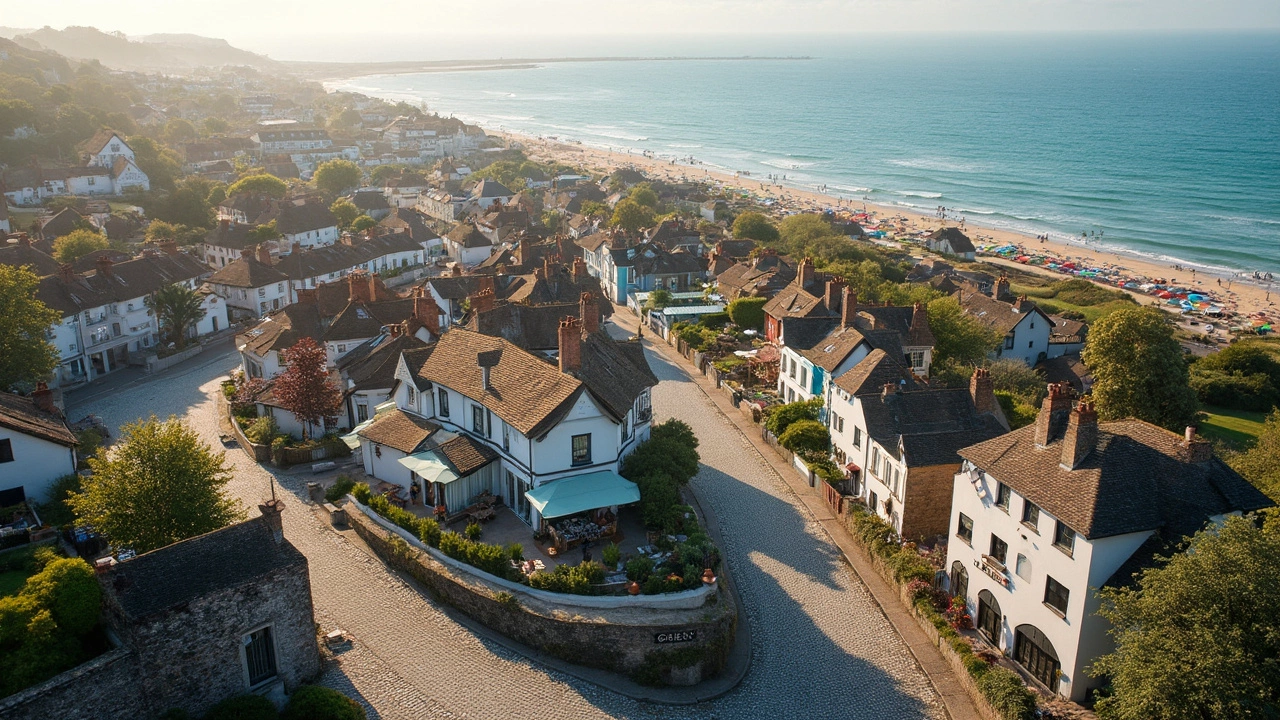Ever wondered why owning a piece of beachfront property often feels like winning the lottery? It seems like you have to be incredibly lucky or immensely wealthy to snag such prime real estate. Yet, the reasons for their sky-high value are not just about the stunning views or the dream of endless beach days.
Start with the obvious: the location. The real estate mantra 'location, location, location' takes on a life of its own when it comes to beachside properties. You're not just buying land; you're buying access to ocean air, scenic vistas, and the tranquil sounds of waves—commodities in their own right. They're rare and that makes them extremely popular.
Then there's scarcity. There simply isn't enough beachfront land for everyone who wants it. Supply is limited and doesn't expand easily since nature has set its boundaries along the shoreline. This limited availability naturally drives up prices, as many potential buyers vie for a piece of the coastal dream.
- The Allure of the Ocean
- Location, Location, Location
- Scarcity Equals Value
- Investment Opportunities
- Environmental Considerations
The Allure of the Ocean
There's something magical about waking up to the sound of waves gently hitting the shore. It's not just a matter of aesthetics; it positively impacts overall well-being. Studies show that being near water can significantly reduce stress levels, improve mood, and enhance mental health.
Owning beachfront real estate often means direct access to activities like swimming, surfing, and beachcombing, which many find more appealing than the standard neighborhood park. Whether it's a sunrise jog along the sand or an evening spent fishing, the opportunities for outdoor fun are endless and right at your doorstep.
Health Benefits
Proximity to the beach means more than just fun and games. People living near coasts often report feeling healthier. The air is fresher, the environment cleaner, and the sun provides a natural source of vitamin D. These factors contribute to healthier lifestyles without much extra effort.
Natural Beauty
The beauty of ocean views cannot be overstated. Imagine sipping a morning coffee while watching the sun rise over the water. It's like living in a postcard. This spectacle is a daily reality for beachfront property owners, who often find their homes become the gathering point for family and friends eager to enjoy the scenic beauty.
Additionally, beachfront locations can increase a property’s value simply by virtue of the view. Buyers are willing to pay a premium for properties that offer such direct access to natural beauty, often making beachfront land a sound investment.
Location, Location, Location
When it comes to beachfront land, location isn't just a buzzword—it's the heart and soul of its value. Think about it: where else can you watch the sunrise over the ocean from the comfort of your own home or hotel window?
Not all beachfront properties are created equal, though. Proximity to urban centers significantly boosts a property's value. For example, being near a vibrant city like Los Angeles or Miami means easy access to amenities and entertainment, driving up demand and, in turn, the price.
Access to Amenities
Properties located near restaurants, shopping centers, and airports have a leg up. Consider coastal hotspots like Waikiki in Hawaii, where being surrounded by every conceivable comfort and adventure opportunity sends property values through the roof.
Climate and Appeal
Let’s not forget the weather. Places with predictable, pleasant climates, like parts of California or Queensland, Australia, add to the hefty price tag. Who doesn’t want year-round sunshine next to their beachfront home?
Interestingly, safety can also play a role. Areas with low crime rates attract more buyers, further increasing demand and cost. People feel comfortable investing in places known for their secure environment.
Clearly, the allure of beachfront land isn’t just about the sand and sea; it’s where that sand and sea are located. That piece of paradise is in high demand when it ticks all these boxes.

Scarcity Equals Value
Ever notice how anything rare seems to cost an arm and a leg? That’s the deal with beachfront land. There’s just not enough of it to go around, and everyone wants a piece. It’s like gold—when you’ve got something that’s high in demand but limited in supply, the price naturally shoots up.
Consider this: the United States, with its extensive coastlines, still has only a minuscule percentage of land classified as beachfront. And it's not just about what's already developed; there’s only so much real estate Mother Nature provides along the shores, making every square meter a hot commodity.
Pauline Reimer, a real estate expert at the Urban Land Institute, puts it this way:
"Waterfront land is the real estate holy grail. Limited availability and high demand are a recipe for sky-high values."
But there’s more. Not all beachfront land is created equal. Certain spots, especially those with easy access to urban amenities or those featuring stunning views, can command even higher prices. Plus, buying beachfront land isn’t just about what you get now; it’s about what it could be worth in the future, especially with the ever-growing tourism industry that feeds off these desirable locations.
It's also worth noting how scarcity affects the cost of everything related to beachfront property. Construction, maintenance, and even insurance for these precious plots can come with premium pricing. It's all connected back to the same principle: scarcity.
If you’re considering taking the plunge into purchasing such valuable land, remember to weigh these factors. Scarcity can equal opportunity, but it also means navigating a competitive and sometimes pricey market.
Investment Opportunities
Buying beachfront land might drain your bank account, but the investment opportunities are golden. Beachfront properties are not just about breathtaking views—they're a serious avenue for making a profit, especially in the hospitality and tourism industry.
Because tourists flock to the coastlines like seagulls to a fish and chips stand, turning such prime land into accommodations like beachfront hotels is one popular route. Plus, beachfront areas are perpetually in demand, meaning these properties rarely sit vacant. As demand remains steady, hotel owners can often charge premium rates for vacationers craving a slice of sandy paradise.
According to a study published by Global Property Guide, "Beachfront properties can yield returns upwards of 20% in high-demand areas." That's not pocket change!
Long-term rental is another option. If managing a hotel seems daunting, renting out to long-term tenants, even on a part-time basis, can also bring in considerable returns. Seasonal rentals allow for personal use when they're not being leased, giving you the best of both worlds.
Overseas Investment
Engaging in overseas investment opportunities for real estate experts can be lucrative too. Many regions value foreign capital, offering incentives for securing local beachfront property. Of course, it's important to understand the local market regulations before diving in.
- Conduct thorough research to grasp market trends.
- Work with local real estate experts.
- Understand local taxation and ownership laws.
| Region | Average Return on Investment (%) |
|---|---|
| Caribbean | 18 |
| Southeast Asia | 22 |
| South Pacific | 15 |
While investing in property has its risks, the financial returns and personal enjoyment can make it worthwhile. Whether setting up a hotel or renting out a family villa, beachfront properties provide a solid portfolio addition, lapping up benefits as endless as the horizon.

Environmental Considerations
When buying or investing in beachfront land, there's more to consider than just the picturesque beauty. Nature has its rules, and beachfront areas face unique environmental challenges that can impact property value and lifestyle.
Coastal Erosion
This is one of the biggest concerns. Waves, storms, and rising sea levels cause gradual wear and tear on the coastline. Erosion can significantly alter the landscape over time, sometimes reducing the actual size of the land you own. Investing in a robust seawall or maintaining this structure can be essential to preserving your property.
Flood Risks
Living close to the water's edge carries the risk of flooding, especially during storm surges or tropical cyclones. Properties in low-lying areas are particularly vulnerable. It’s crucial to understand local flood zones and history. Some spots might require elevated building designs or special insurance policies to mitigate these risks.
Regulations and Restrictions
Buying beachfront property isn't always about freedom to build whatever you like. Governments often place strict regulations on coastal construction to protect natural habitats and manage environmental impact. These could include limits on building height, materials used, or proximity to the water's edge.
Preservation of Natural Habitats
Many coastal areas are home to unique plants and wildlife. Protecting these ecosystems can lead to certain restrictions or responsibilities for property owners. While this may seem burdensome, it also ensures that the natural beauty remains intact for future generations.
It's vital to weigh these environmental factors when considering beachfront land as an investment or home. Keeping an eye on local conservation efforts and being proactive about property maintenance can help ensure that your seaside dream doesn't turn into a costly nightmare.
